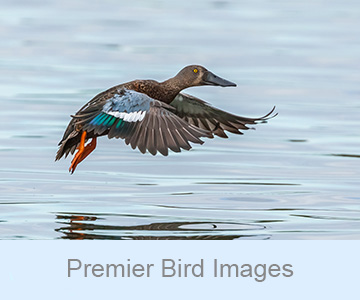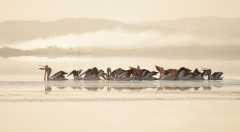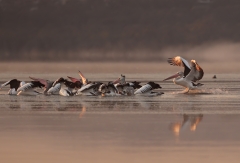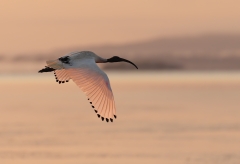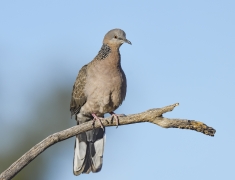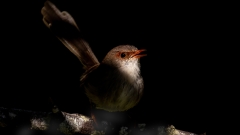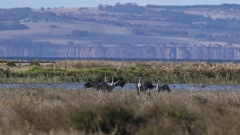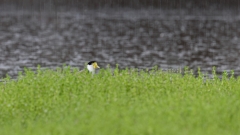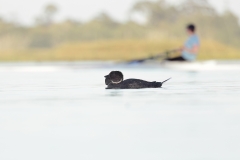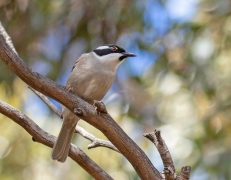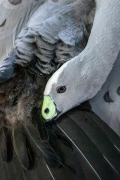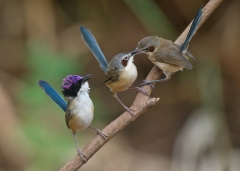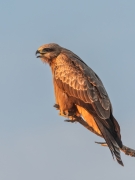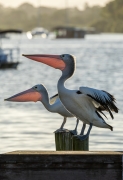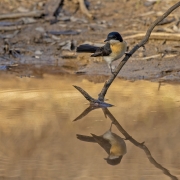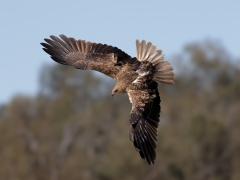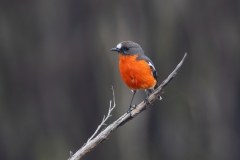
Inspiring and Supporting Photographers of Australian Birds
A Special Interest Group of BirdLife Australia Follow us! 
 Join Us
Join Us
BLP Member Login
Website Upgrade
This website will be off-line from midnight Sunday/Monday 29th April
We will be installing a major upgrade to the website software.
We anticipate that this will take most of Monday to complete and test;
the site should be available for members and guests by Tuesday 30th April.
Following the upgrade, please report any problems to [email protected]
This Search facility will search all website content, uploaded documents, and images. Some content on this site is restricted to BLP members; visitors may not be able to access all the items found. The search options button on the All Photos page (on the Photo Gallery drop-down menu), and on individual gallery pages, provides more options for searching images only.
The Landscape/Habitat/KBAs gallery is where our members can post images of places, such as long range/wide angle landscape photos, or patches of habitat, such as medium range views of typical scrub, forest, wetlands, etc. Places must be within Australia or its external territories/dependencies.
BirdLife Australia is hoping that this will become a useful resource for their Key Biodiversity Areas project. They are seeking images of Key Biodiversity Areas to use in their 2017 campaign; the maximum image size they will use on their website is 1680 x 995. The limits for uploads to this gallery are different to those for our bird image galleries, to allow you to submit images of these dimensions. Images submitted to this gallery may be downloaded by BirdLife Australia staff for use in the KBA campaign, without using the normal Download Request process; images may be cropped by BirdLife Australia for use on their website and in the KBA campaign.
The Critique Gallery is where members can submit images that they would like to receive critical comment about. Images submitted to this gallery will have a Comments section below the image information, where any member can submit comments about the image. The comments are "threaded" - if you reply to a comment, the reply will appear under that comment, not as a separate new comment about the image.
We have developed some intial guidelines regarding the operation of this gallery, and we may revise these (and the manner in which the gallery operates) as we see how this gallery operates. At present, we suggest:
- When you submit an image to this gallery, you should include the reason why you would like feedback, and/or the problem(s) that you are experiencing, in the Comments field on the Submit Photo page. If you are seeking advice on post-processing, please include the software that you are using for this.
- Images submitted to this gallery will be published by a moderator before appearing, but the moderator will not reject an image for poor quality (as occasionally happens with images submitted to the New Images gallery).
- Images published in the Critique Gallery will appear in the Latest Images column on the Home page on the day after publication.
- Images submitted to this gallery will be counted against the daily submission limit of four images. We also ask members to limit the number of images they submit to this gallery to not more than one per week.
- Members offering critique comments should ensure that those comments will be of use to the photographer. The commenting facility in the Critique Gallery is not intended for general comments such as "Great shot" or "Could be better". Comments should at least address the issue(s) noted by the photographer in the image comments field; they may also address additional issues.
- A photographer who has received feedback on an image in the Critique Gallery may submit a revised version of the image to the site, in either the Critique Gallery or the New Images gallery. Previously critiqued images will not be accepted to any of our competition galleries.
The Critique Gallery is open to public viewing, but only members may submit comments. Please remember that you must be logged in to the website to submit comments on any image in the Critique Gallery.
This gallery is for images of birds, or bird-related activities, which can be broadly categorised as being of scientific or conservation interest. Before you submit any image(s) to this gallery, please contact us to check that what you are proposing is acceptable: email us - This email address is being protected from spambots. You need JavaScript enabled to view it. - telling us what you would like to submit; you don't need to include the image(s) themselves, just a description of what they're about, and we'll let you know if that's OK. When you do submit an image, please include all relevant information in the Comments field.
The idea for this gallery was canvassed by a poll in our Forum in 2016, and was overwhelming accepted by those who chose to give their opinion. It was initially set up as a separate gallery; in early 2024 these images were transferred to the Main Library, with the "creative image" keyword attached to them. Members can now submit their creative images directly to the New Images gallery (from there, they will be transferred to the Main Library after 1 month), assign the "creative image" keyword to them, and use the Comments box to explain how the image was created.
What's a "creative image"? Well, basically, anything that you want - it may be created in-camera, by tweaking your setting when you capture the image, or by accidentally getting it "wrong" but producing a pleasing result; it can be a close-up section of a conventional image; it can be something created by post-processing one or more images using any technique you care to apply. Anything goes! The only real "rules" are, as always, ethical photography, and no nesting birds or nests with eggs and/or chicks.
Go to the All Photos page and use the Search options to search for images with the "creative image" keyword to see what our members have produced.
The BirdLife Photography Committee offers a series of awards for various levels of Member engagement, see below for details.
As a member of BirdLife Photography you will have the opportunity to participate in our Awards.
Note: Winners in all categories, not including competitions, will be announced in February/March of the following year.
BirdLife Photography Member of the Year
The most prestigious award is Birdlife Photography Member of the Year. This award is at the discretion of the Committee and will be presented to a BirdLife Photography financial member who demonstrates a high level of effective activity for the benefit of members which could include:
- contributes high quality images to the image galleries through the website during the calendar year,
- consistently demonstrates behaviour reflective of BLP’s vision and mission
- participates and/or encourages others to participate in the Current Competitions organised during the calendar year,
- actively contributes to a range of BirdLife Photography activities, events, projects or resources that benefit our members (as determined by the Committee).
The award will consist of a quality sliced crystal cylinder with a frosted white-on-crystal BLP logo and laser inscription, in a velvet presentation case. A photograph of the winning Member and short biography will be incorporated as a permanent record on this website.
Best Competition Photographers of the Year
Awards will also be presented to the Best Competition Photographers of the Year, for each competition level - Entry, Intermediate, and Advanced. Winners will be announced in December.
The overall winner for each competition level will be determined by the total number of points accrued during the year, summed across all Current Competitions and for each level of competition. Points will accrue from both Member voting and Mystery Reviewer selections. For Member voting: Winner = 4 points, Highly Commended = 3 points and Commended = 2 points. For Mystery Reviewer selections: Winner = 5 points, Highly Commended = 4 points, Commended = 3 points, and Special Mention = 2 points. In addition, each entrant in a competition will receive 1 point.
As the Best Competition Photographer of the Year is chosen by the membership from anonymous photo entries, these awards will be open to members of the BirdLife Photography Committee. The Committee members may not, however, participate in any other award.
These awards will consist of a BirdLife Photography custom designed 50 mm coin-style medal, presented in a blue velvet case.
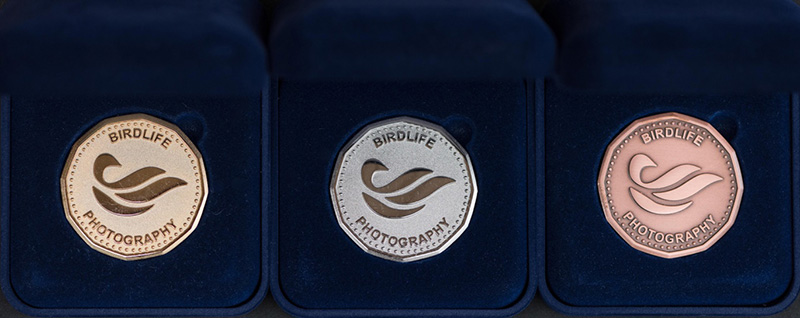
Best Photograph of the Year
The winning image will be chosen by member voting from a shortlist of images selected by a panel of image moderators and committee members; images taken by any panel member are ineligible for this award.
The winner will receive a BirdLife Photography custom designed 50 mm gold finish coin-style medal, presented in a blue velvet case.
In addition the award will also include a parchment style certificate accompanied by a Newsletter article exhibiting the Member’s winning image
Birdlife Photography Encouragement award
The BLP Encouragement award will be awarded to a member who shows a high level of improvement in the quality of photos submitted during the year in the Entry or the Intermediate level. This award will be made by the Committee, taking into account the recommendation of the Competition Coordinator.
The award(s) will consist of a parchment style certificate accompanied by a Newsletter article exhibiting a selection of the Member’s images.
Coming soon ...
The Bird Identification Gallery is an exciting initiative – designed as a resource to enhance the species identification skills of our members. The gallery will house high quality images of adult males and females, immatures, juveniles, and plumage morphs (breeding/non-breeding plumage, eclipse plumage and published regional variations), and under-wing patterns. These images will provide a continuing updated photographic resource that currently is only available by purchasing a published photographic guide book. Populating this gallery with the highest quality images for identification will also provide our members with an ongoing opportunity to capture and have their images displayed as some of the best for field identification of Australian birds.
Digital images suitable for this gallery will have a clear set of identifiable criteria developed for facilitating species field identification. These criteria are being developed by an appointed Bird Identification Gallery Committee.
Images for this gallery will be selected from the New Images Gallery, the Main Library, and the past and current competition galleries.
The total number of images for each species will be kept to a minimum to facilitate a readily searchable resource. The preferred number of images is up to 20, as this is the (default) number of images that are displayed on a single image thumbnail page. For some of the more complex species more than 20 images may be required, but the maximum number will not exceed 40 images.
The Previous Bird ID Challenge galleries also provide notes on identification; you may find it useful to visit these for the sets of birds that have been used in past challenges.
In 2014 the BirdLife Photography Committee initiated a review of the structure and function of its digital image library, the on-going repository of Australian bird images submitted by BirdLife Photography members to promote a visual appreciation of our unique birdlife and to provide a digital resource for related educational and conservation purposes. As a consequence of this review, the Committee decided to initiate a restructure of the image library to meet the evolving needs of BirdLife Photography and its parent organisation, BirdLife Australia. The restructure commenced in January 2015 and is a continuing process.
The first phase expands the structure of the image library with three additional galleries, one of which is the New Images Gallery (NIG). This gallery came into operation in April 2015. It accepts most images submitted by our members; everything except images in a 1400x450 format used in the slide-show panel on some of this website's pages, which are submitted to the Slides gallery; Photo Competition entries, which are submiited to the competition galleries; and submissions for the Creative Images and Science & Conservation galleries. Images submitted to the NIG are subjected to a moderation process undertaken by an in-house, experienced moderating panel, before appearing on the website; each day the Latest Images column on our Home page shows all images that were published the previous day, if there were none (a situation that seldom occurs), the content remains unchanged from the previous day. Images are usually published within a day or two of submission; occasionally, the moderation process may take longer if the bird is difficult to identify. In addition, the moderating panel may select high-quality images, or images of rare or uncommon birds (possibly of lower quality), to appear in the Recent Picks column on our Home page. Published images remain in the NIG for a month, and are then transferred to the Main Library. They will then be scheduled for appraisal by the Working Groups assigned to the Premier Bird Images Gallery and the Bird Identification Gallery.
This site contains many thousands of images of Australian birds submitted by our members, in galleries of various types. Most images are submitted to the New Images gallery, and subsequently transferred to the Main Library. Images must show clearly identificable birds, and be of acceptable quality (reasonably sharp, well exposed); generally, the bird(s) should occupy a significant portion of the image, and should not be appreciably obscured. The species that we will accept are those on the BirdLife Working List of Australian birds, excluding those species whose Population is shown as 'Domestic'. We will accept pictures of hybrid birds - see the note in the Species selection area of the Submit Photo page. We will not accept images of unknown birds which are possible aviary escapees, or domestic birds, as we are unable to clearly identify these; they are not on the list of accepted species. We will accept images of birds which occur in Australia but were taken overseas, with the proviso that, if there are subspecies, the image is of the subspecies which occurs in Australia.
For several years, images submitted to our competitions have not been allowed to have watermarks or borders/frames, in order to ensure anonimity until the competition voting is completed. We have decided that we will extend this rule to images submitted to all galleries, to provide consistency of images across the site and to ensure that all images will be considered when people/organisations are requesting images for download - most of these requests are for conservation/education purposes and "plain" images are appropriate for this. From Friday 26th June 2020, we will not accept images with watermarks and/or borders/frames in any of our galleries - with one exception: images submitted with the "creative" keyword selected may have a border/frame for creative effect.
All images submitted are assessed by a moderator before they are published (made visible on the website), and unacceptable images are immediately rejected; the moderator will include the reason for the rejection in an email to the photographer. All other images are given a rating for both pose/composition/visual impact and technical; those which receive a "poor" rating will be automatically removed from the site after (about) one month. A document giving details of the image rating criteria used by our moderators is available here.
Images may be submitted to a special Slides gallery; these are used in the slideshow on the home page and some other pages of the site. The gallery description (which appears when you select that gallery to submit the image to) contains details of the stricter requirements for those images.
Images may also be submitted to our Current Competition galleries, when a competition is open for entries. Entries to previous competitions are retained for viewing in Previous Competition galleries; images which were rated as "poor" by the competition moderator(s) may be removed after the competition ends..
There are two special galleries, which contain selected images from all submissions; these are the Premier Bird Images gallery and the Bird Identification gallery. There are also two galleries for images that are not regular bird photos - the Landscape/Habitat/KBAs gallery, and the Science & Conservation gallery. The side-menu items here will provide more detail on these galleries.
Finally, the images used in previous Bird Identification Challenges are available in a set of Previous ID Challenge galleries.
This gallery showcases BirdLife Photography’s very best images of each species; we intend it to become the premier go-to resource for Australian bird images.
In 2014 the BirdLife Photography Committee initiated a review of the structure and function of its digital image library, the on-going repository of Australian bird images submitted by BirdLife Photography members to promote a visual appreciation of our unique birdlife and to provide a digital resource for related educational and conservation purposes. As a consequence of this review, the Committee decided to initiate a restructure of the image library to meet the evolving needs of BirdLife Photography and its parent organisation, BirdLife Australia. The restructure commenced in January 2015 and is a continuing process.
The first phase expands the structure of the image library with three additional galleries, one of which is the Premier Bird Images Gallery (PBIG). The PBIG is a collection of the very best images selected from the Main Library (where most of the images submitted by our members are located) and other galleries (eg. Previous Competition galleries); these images are transferred to the PBIG, which will serve as a showcase for our members' best images, and will encourage their use by BirdLife Australia and third party organisations.
The Selection Process
There are two Working Groups appraising the existing images in our library, working through the thousands of images in family groups. Each WG consists of three experienced photographers; several of these photographers have won national and international awards for their photography. Whilst the judging of images will always have a subjective component, images are judged by reference to standards such as the Photographic Exhibitions Committee of the Professional Photographers of America. Images are scored out of a total of 15 points and those images with a score of 14 or 15 are identified for transfer to the PBIG. A score of 15/15 is judged as excelling in all the key criteria that an individual judge ascribes to an image of the highest quality. A 14/15 image may have one deficiency in a critical element that removes it from the 15/15 category but still scores the image in the second highest tier.
Images assessed for the PBIG are assigned a star rating, based on the total of the highest two scores from the three judges. These ratings are:
5-star: the two highest scores total 29 or 30
4-star: the two highest scores total 28
3-star: the two highest scores total 27
2-star: the two highest scores total 26, OR there is one score of 14 or 15
1-start: there is one score of 13
Images with 5 or 4 star ratings are moved from their original gallery to the Premier Bird Images Gallery; except as described in the following two paragraphs.
The Committee has decided that an individual photographer may only have a total of 3 images of a species in the PBIG. Where a photographer has more than 3 images for any one species, images selected for transfer to the PBIG will be referred back to the appropriate WG for final selection. In special circumstances, the BirdLife Photography Committee may allow more than 3 but no more than 5 images for an individual species from any one photographer. Where images with 5 or 4 stars have been excluded on the basis of the species limit, these images will remain in their original gallery; you can find these images by using the PBIG Star Rating in the Search facility in our galleries.
In addition to image quality, PBIG images must meet minimum size requirements. For images submitted prior to the introduction of our New Images gallery (April 2015), this is set to at least 95% of the previous maximum size limits for image submission (1024 pixels wide, 768 pixels high); for newer images, this is 95% of the current maximum size limits (1400 pixels wide, 1050 pixels high). Images that have been selected by a Working Group, but excluded for size reasons, will also remain in their original gallery, and can be found by their PBIG Star Rating in the Search facility.
Families Assessed
The table below is an update on the progress of the various Working Groups, showing the families that have been accessed to date. For some of these families no images have been selected for the PBIG, for other families, only some species are represented in the PBIG. The BLP Committee encourages its members to regularly review this page for updates to this information and to check which species are present in the PBIG (by using the Filter/Sort capability in that gallery), utilise the resources provided by BLP to enhance your photographic skills and apply those skills to capture high quality images worthy of display in the new gallery structure. Please note that images cannot be submitted directly to the PBIG; images must be submitted to the New Images Gallery and they will be appraised for selection to the PBIG when transferred to the Main Library and the New Images Working Group is established. Images submitted to photo competition galleries will also be assessed by this WG.
This table uses the families listed in the BirdLife Australia Working List V2.1 taxonomy used on this site. It includes the highest image ID for the images in each family have been assessed; images with higher ID numbers will not have been assessed, but will be in subsequent rounds of the assessment process.
| Family Name | Scientific Name | Assessed | Highest Image ID |
| Ostriches | Struthionidae | Yes | 16392 |
| Emus and Cassowaries | Casuariidae | Yes | 16392 |
| Megapodes | Megapodiidae | Yes | 16392 |
| Guineafowl | Numididae | Yes | 16392 |
| New World Quail | Odontophoridae | Yes | 16392 |
| Pheasants and Quail | Phasianidae | Yes | 16392 |
| Magpie Goose | Anseranatidae | Yes | 16392 |
| Ducks, Geese and Swans | Anatidae | Yes | 16392 |
| Tropicbirds | Phaethontidae | Yes | 16392 |
| Grebes | Podicepidae | Yes | 16392 |
| Flamingoes | Phoenicopteridae | Yes | 16392 |
| Pigeons and Doves | Columbidae | Yes | 16392 |
| Frogmouths | Podargidae | ||
| Eared Nightjars | Eurostopodidae | ||
| Nightjars | Caprimulgidae | ||
| Owlet-nightjars | Aegothelidae | ||
| Swifts and Swiftlets | Apodidae | ||
| Northern Storm-Petrels | Hydrobatidae | ||
| Southern Storm-Petrels | Oceanitidae | ||
| Albatrosses | Diomedeidae | ||
| Petrels and Shearwaters | Procellariidae | ||
| Penguins | Spheniscidae | ||
| Frigatebirds | Fregatidae | ||
| Gannets and Boobies | Sulidae | ||
| Darter | Anhingidae | ||
| Cormorants and Shags | Phalacrocoracidae | ||
| Pelican | Pelicanidae | ||
| Storks | Ciconiidae | ||
| Herons, Egrets and Bitterns | Ardeidae | ||
| Ibis and Spoonbills | Threskiornithidae | ||
| Osprey | Pandionidae | ||
| Eagles, Kites, Goshawks | Accipitridae | ||
| Falcons | Falconidae | ||
| Cranes | Gruidae | Yes | 28994 |
| Crakes, Rails and Swamphens | Rallidae | Yes | 28474 |
| Bustards | Otididae | ||
| Sheathbills | Chionididae | ||
| Stone-curlews | Burhinidae | Yes | 29217 |
| Oystercatchers | Haematopodidae | Yes | 29712 |
| Stilts and Avocets | Recurvirostridae | Yes | 29827 |
| Plovers, Dotterel and Lapwings | Charadriidae | Yes | 30564 |
| Plains-wanderer | Pedionomidae | Yes | 29394 |
| Jacanas | Jacanidae | Yes | 29285 |
| Painted Snipe | Rostratulidae | Yes | 29394 |
| Snipe, Sandpipers, Godwits, Curlew, Stints and Phalaropes | Scolopacidae | Yes | 33494 |
| Button-quail | Turnicidae | ||
| Pratincoles | Glareolidae | ||
| Skuas and Jaegers | Stercorariidae | ||
| Gulls, Terns and Noddies | Laridae | ||
| Kakas and Keas | Nestoridae | ||
| Cockatoos and Corellas | Cacatuidae | ||
| Parrots, Lorikeets and Rosellas | Psittacidae | ||
| Parrots, Lorikeets and Rosellas | Psittacidaeus | ||
| Cuckoos | Cuculidae | ||
| Hawk-Owls | Strigidae | ||
| Masked Owls | Tytonidae | ||
| Kingfishers | Alcedinidae | ||
| Bee-eaters | Meropidae | ||
| Dollarbird | Coraciidae | ||
| Rollers | Coraciidae | ||
| Hoopoes | Upupidae | ||
| Pittas | Pittidae | Yes | 16392 |
| Lyrebirds | Menuridae | Yes | 16392 |
| Scrub-birds | Atrichornithidae | Yes | 16392 |
| Treecreepers | Climacteridae | Yes | 16392 |
| Bowerbirds and Catbirds | Ptilonorhynchidae | Yes | 16392 |
| Fairy-wrens, Emu-wrens and Grasswrens | Maluridae | Yes | 16392 |
| Bristlebirds | Dasyornithidae | Yes | 16392 |
| Thornbills and Gerygones | Acanthizidae | Yes | 16392 |
| Pardalotes | Pardalotidae | Yes | 16392 |
| Honeyeaters and Chats | Meliphagidae | Yes | 16392 |
| Australian Babblers | Pomatostomidae | Yes | 16392 |
| Logrunners | Orthonychidae | Yes | 16392 |
| Whipbirds and Wedgebills | Psophodidae | Yes | 16392 |
| Sittellas | Neosittidae | Yes | 16392 |
| Cuckoo-shrikes and Trillers | Campephagidae | Yes | 16392 |
| Whistlers, Shrike-thrushes and allies | Pachycephalidae | Yes | 16392 |
| Shriketits | Falcunculidae | ||
| Australo-Papuan Bellbirds | Oreoicidae | ||
| Orioles and Figbirds | Oriolidae | ||
| Boatbills | Machaerirhynchidae | ||
| Woodswallows, Currawongs, Butcherbirds and Magpie | Artamidae | ||
| Drongos | Dicruridae | ||
| Fantails | Rhipiduridae | ||
| Shrikes | Laniidae | ||
| Crows and Ravens | Corvidae | ||
| Monarch and Flycatchers | Monarchidae | ||
| Chough and Apostlebird | Corcoracidae | ||
| Birds of Paradise | Paradisaeidae | ||
| Australian Robins | Petroicidae | ||
| Larks | Alaudidae | ||
| Cisticolas | Cisticolidae | ||
| Reed-Warblers | Acrocephalidae | ||
| Grassbirds | Megaluridae | ||
| Yes Babblers | Timaliidae | ||
| Leaf Warblers | Phylloscopidae | ||
| Swallows and Martins | Hirundinidae | ||
| Bulbuls | Pycnonotidae | ||
| Old world flycatchers | Muscicapidae | ||
| Thrushes | Turdidae | ||
| Starlings | Sturnidae | ||
| Flowerpeckers | Nectariniidae | ||
| Sunbirds | Dicaeidae | ||
| Weaver Finches | Estrildidae | ||
| Weaver Finches | Passeridae | ||
| Pipits and Wagtails | Motacillidae | ||
| Old World Finches | Fringillidae | ||
| Buntings | Emberizidae |
Late in 2014, we introduced a new facet to our competitions, aiming to deliver an additional level of feedback to our membership - a Mystery Reviewer who selects his or her top images, as well as providing a short critique for each of the images they have chosen. Our Mystery Reviewer(s) will (usually) remain anonymous, but we can assure you that he/she has extensive expertise in photographic techniques, wildlife/nature photography and judging photographic competitions. The Small in the Landscape competition was the first competition where our Mystery Reviewer was introduced.
Our Mystery Reviewers select and critique images from all three competition levels; Entry Level, Intermediate, and Advanced (not all Advanced level competitions have had a Mystery Reviewer). Mystery Reviewers chosen for critiquing the Advanced level competitions are award-winning and/or professional photographers. The Mystery Reviewer has some discretion in the number of images they select, generally from 5 images up to about 12. The number of images selected is generally highest for Advanced, then Immediate and finally Entry level. This is because there are more high quality images submitted by the more experienced advanced level photographers, images are often difficult to separate and they are worthy of recognition. This is not discriminatory because the different levels do not compete against each other.
All the Mystery Reviewer selections/critiques are available from the Mystery Reviewer Critiques page; the most recent articles are at the top.
Photographers whose images have been selected by a Mystery Reviewer can contact our website administrator, This email address is being protected from spambots. You need JavaScript enabled to view it., who will advise if the Mystery Reviewer is willing to be contacted for further discussion of their image.
CONTACT US
The easiest way to contact us is by emailing us at This email address is being protected from spambots. You need JavaScript enabled to view it.
The Our People page, in the About Us section, contains email links to each of the committee members.
Copyright © BirdLife Photography 2016-23. Website design and programming by This email address is being protected from spambots. You need JavaScript enabled to view it. and This email address is being protected from spambots. You need JavaScript enabled to view it.. Website Administrator: This email address is being protected from spambots. You need JavaScript enabled to view it..






